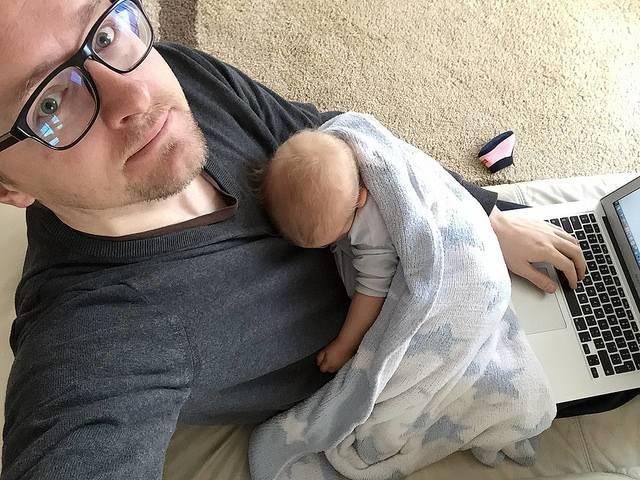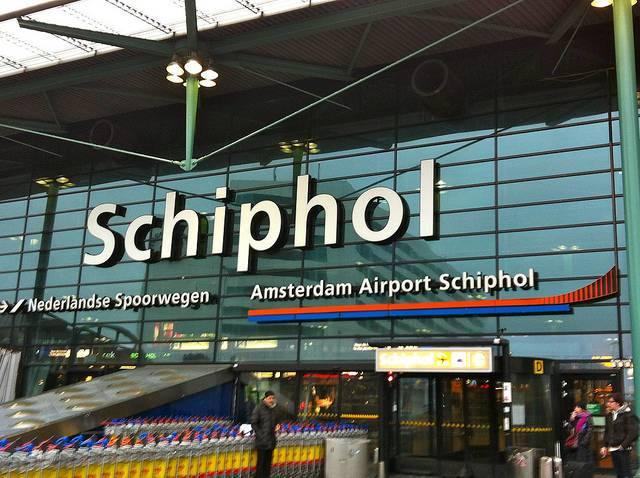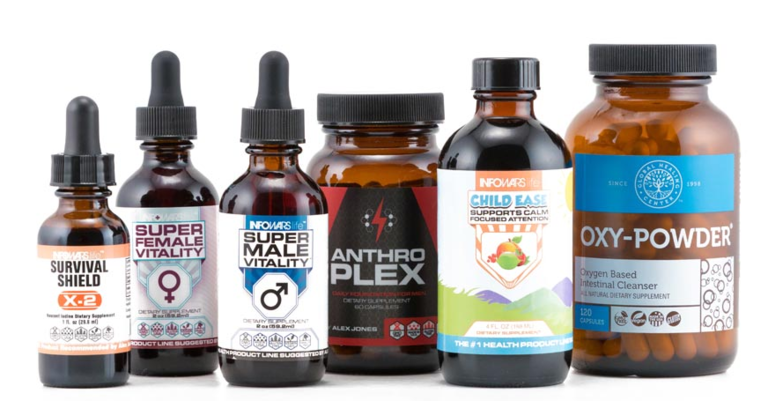The Economic Benefits of Peace


By Camilla Schippa, Director, Institute for Economics & Peace
War and violence extract huge costs from the global economy. In the aftermath of conflict, private sector development is critical for peace in the long run. However, all too often, business perceives the risks in post-conflict settings as too great, locking many fragile countries in aid dependence and economic instability. Not only could business activity build peace in the right settings, business can also gain significant profits from high-opportunity post-conflict contexts. Targeted investments towards identified drivers of peace in fragile states could therefore trigger virtuous cycles where peace and prosperity mutually reinforce each other.
As highlighted by a recent Comres survey, risks around conflict and war are the ones that concern us the most. Usage of weapons of mass destruction is ranked as the global risk needing the most urgent response by 62 percent of respondents in eight countries, followed by politically motivated violence (57 percent) and climate change (56 percent).
This is not surprising as the world has become less peaceful in the last decade. Global conflict and violence is at a 25 year high, with increases in the number of deaths from conflict, the levels of terrorism, and the emergence of new conflicts that, even in the most optimistic scenarios, will take years to solve and rebuild from. Consequently, the world faces its most severe humanitarian crisis since World War II, with over 65 million people now refugees, asylum seekers or internally displaced – equivalent to almost one percent of the global population.
In addition to the obvious human and social costs, this is having a dramatic impact on our economies.
In 2016 the global economy lost $14.3 trillion to violence and conflict in purchasing power parity (PPP) terms (Global Peace Index 2017). This is equivalent to 12.6 percent of the world Gross Domestic Product (GDP), or 12.6 percent of everything the world produces and consumes. An enormous amount of economic activity goes towards creating, containing and dealing with the consequences of violence – with a yearly cost of $1,953 for every person on the planet.
Images of any major Syrian city in 2017 show the extent of damage in modern warfare. Not only are private houses and businesses destroyed, but critical infrastructure – electricity, water supply, telecommunications, schools and health facilities – have been turned to rubble. Yet while the economic impact of war is somewhat understood, the potential benefits from violence reduction have traditionally been overlooked.
Redirecting a mere 10 percent of the global economic impact of violence would be enough to address many of the most fundamental challenges of our time. After all, this would represent $1.43 trillion. Imagine transferring such an amount to increase Official Development Assistance, and multiplying by almost ten times the funds directed from rich to poor countries to achieve the UN’s Sustainable Development Goals. Alternatively, this amount could triple the flow of resources invested to address climate change.
Most critically, we may be conditioned to think that the realization of peace will add further costs to the global economy through peacekeeping budgets and humanitarian assistance. While this is largely true in the short term, there is an overlooked part of the equation which involves not just the positive benefits that business activity can bring to peace, but also the surprising opportunities for profitable business activities in fragile and conflict-affected contexts over the medium term.
Often, opportunities for business in fragile and less peaceful, post-conflict contexts are under-appreciated. But post-conflict and fragile states are among the fastest growing economies in the world. More than half the countries projected to deliver economic growth of more than five percent in 2018 are either fragile or extremely fragile.
Research by the World Bank and the Institute for Economics & Peace shows that while many post-conflict and fragile states carry higher levels of risk, the rate of return on capital is on-average three times higher than the global average. Interestingly, data suggests that the risk premium in many of these countries may be overpriced. According to the World Bank’s Enterprise Business Survey, average business losses to crime were $15,957 in very high peace countries compared to $9,478 in very low and $7,921 in low peace countries.
Policymakers should encourage key financial institutions to address these market failures where they exist, and potentially incentivize investment in key countries in order to demonstrate the potential benefits to other investors. Financial instruments such as development impact or social impact bonds have a role to play here.
These facts ought to throw into sharp relief the potential virtuous cycle between business and peace. While there are important circumstances where business activity can create the conditions for conflict, as in the case of extractives, there is a counter-narrative that is also important to acknowledge – business can play a positive role for societal peacefulness and reap significant financial returns.
Improving governance and the business environment go hand in hand. Business can improve based on government action to provide regulatory certainty and macroeconomic stability, control corruption, and protect property rights. These factors have important systemic and societal benefit for other drivers of peace. Realizing this virtuous cycle may be the key to lowering the $14.3 trillion yearly economic losses from violence and to building long term peace, all the while boosting business profits – a tantalizing win-win scenario.
This piece forms part of the Global Challenges Foundation’s report, Global Governance for Global Citizens, to be published on September 13.
Camilla Schippa is Director of the Institute for Economics and Peace in Sydney, which produces the Global Peace Index. She is also a member of the UN’s expert reference group for the Global Consultation on Conflict, Violence and Disaster in the Post-2015 Development Agenda, the Club de Madrid’s Shared Society expert group, and the GCERF Policy, Think & Do Tanks Constituency. She formerly served at the UN Secretariat for over a decade, and currently sits on the Board of Directors of the Centre for Armed Violence Reduction.
Airbnb Working with Danny Glover to Engage Communities of Color
The online hospitality service Airbnb has added Danny Glover to their list of advisors. The 71-year-old actor, known for movies such as the Lethal Weapon series and Angels in the Outfield, will work with Airbnb on improving the company’s engagement with communities of color.
Bringing Glover onboard is another step Airbnb is taking to repair its relationships with ethnic and racial minorities. On one hand, the sharing economy giant has been lauded for providing hosts with a way to score a new stream of revenue – and even making a difference in whether some hosts can avoid losing their homes. But Airbnb has also been criticized for its role in inflating rents in cities such as Barcelona and San Francisco.
Airbnb has also come under scrutiny in recent years as many people of color have come forward to complain that they were shunned by hosts. Last year the company was hit with a racial discrimination lawsuit, and revamped its terms and conditions with the assistance of leaders such as former U.S. Attorney General Eric Holder. Despite those changes, some rogue Airbnb hosts still fomented public relations headaches for the company. Earlier this winter, an Asian-American graduate student shared her experience after a host canceled her reservation last-minute while she was driving in a snowstorm. California’s fair housing agency ended up fining the host $5,000 and ordered her to take a university-level Asian studies class.
But Airbnb has been a leader on other fronts, whether it was speaking out and offering space in support of citizens affected by the Trump White House’s travel ban, or terminating the accounts of neo-Nazis and white supremacists who were attempting to rent spaces during this month’s “Unite the Right” rally in Charlottesville.
To that end, Airbnb’s publicly stated commitments to ensure everyone has fair access to a roof over their head is why Glover reportedly agreed to work with the company. “I’ve seen first-hand how committed [Airbnb is] to getting it right,” he announced in a public statement, “and I have been incredibly heartened to see the resources, desire, and drive they are directing towards ensuring that their service is used fairly and inclusively.”
Glover and Airbnb say they will strive to show communities of color how they can take advantage of the company’s platform to enhance their income. “In the U.S., the typical Airbnb U.S. host earns $6,100 every year they share their home,” Glover said, “supplemental income that can cover expenses like food, rent, caring for a sick relative, and education for their children.”
The relationship Airbnb forged with Glover comes one month after the company announced it started a partnership with the National Association for the Advancement of Colored People (NAACP) to raise awareness about the company in minority neighborhoods. Airbnb said it will share 20 percent of its earnings to the NAACP, while promising to boost the diversity of the company’s administrative staff.
While Airbnb has been criticized for contributing to gentrification, causing rents in some cities to spike and create housing shortages, for homeowners wishing to rent out that spare room or in-law unit, the results can offer financial security. Estimates of what hosts make on average are all over the map; one report said New Yorkers pocketed on average $5,475 last year. But with hosts pocketing 97 percent of what they charge through Airbnb, while usually receiving those funds next day if they have a PayPal account, welcoming Airbnb guests pays dividends. Glover mentioned the social benefits as well:
“The bonds that can form in these interactions are indispensable to the greater project of breaking down the social barriers that make all forms of discrimination so intractable in the first place. These spontaneous interpersonal relationships are the laboratories for transforming relationships among people; the sites at which we begin to implement our highest ideals in practical yet poignant ways.”Image credit: Gage Skidmore/Wiki Commons
With Personal Automobiles in the Rear View Mirror, Ford Looks Ahead to Life as a Mobility Company


We do not know how soon our future cars and trucks will be both powered by electricity and roam our streets autonomously, but as is the case with television, computers and smartphones, self-driving cars will most likely become our reality much quicker than we think. To that end, automakers such as Ford are rallying as fast and nimbly as they can to not only stay relevant, but thrive in the near future. Various Ford executives, along with futurists and leaders in the technology sector, gathered at San Francisco’s Fort Mason last week to share their vision at a symposium aptly titled “City of Tomorrow.”
Overall, speakers waxed optimistically about this future, one in which individual car ownership becomes a relic of the past and mobility as a service is entrenched as the norm. While it may be clear to Ford that their 100-year-old business model is becoming outdated, and may not even survive as ground transportation undergoes this makeover, the company projects enthusiasm for how it can contribute to the “smart cities” of tomorrow. “We believe mobility is a fundamental human right,” said Marcy Klevorn, Ford’s executive vice president and president of the company’s mobility division in opening the symposium.
Whether the ability to move around a community on wheels is a “human right” merits its own debate. But the reality for Ford is that automakers really do not have a choice but to adapt to this new reality. Cities are becoming more crowded; more consumers are eschewing the hassle and expense of car ownership; and city planners are increasingly open to urban layouts that bend to the will of pedestrians and cyclists, not just to automobile owners.
Janette Sadik-Khan, Commissioner of New York City’s Department of Transportation during the second half of Mike Bloomberg’s administration, highlighted the benefits of such an approach. And she spoke eloquently of this new way of thinking in cities; after all, she arguably sparked the trend of urban planners designing streets to a place for everyone, not just cars.
Now, New York is emerging from the long shadow of Robert Moses, New York’s post-war master urban planner who demolished neighborhoods in favor of massive high-rise housing projects and concrete expressways. To critics, his urbanization legacy was one that favored cars over people as he constricted the growth of the city’s public transportation system. But New York’s landscape has changed drastically under Bloomberg and Sadik-Khan: eight new rapid bus lines, the largest bike-sharing network in North America, dedicated bicycle lanes, more green space and at least 60 new public plazas, many of which were completed on the cheap with some paint, barricades, tables and chairs. Now other cities are looking to New York, as Sadik-Khan noted, “When you change the streets, you change the world.”
Automotive companies will have to find a way to squeeze their way into this new paradigm.
Nevertheless, this changing world offers plenty of opportunities for Ford and its competitors, even if car ownership declines. Indeed, those same millennials who are avoiding cars also have goods delivered to them with increasing frequency. That “last mile” of delivery, often the most expensive, most inefficient and least controllable stage of transporting goods, has long bedeviled countless companies from Domino’s Pizza to UPS. This market certainly provides Ford an opening: As Uber and Google duke it out over who will reign supreme in the autonomous vehicles space, Ford could very well carve a lucrative niche with self-driving commercial delivery services.
Ford, however, faces two challenges on this front. First, the company clearly has to hustle if it will attain its goal of having the first wave of self-driving cars on the streets by 2021. Second, the company needs to exploit this market within the dated and congested infrastructure where these same millennials want their meals and gadgets delivered – yet at the same time, they do not want those beverage delivery trucks blocking traffic or waking them up early in the morning or disturbing them at night. “We need to use the infrastructure we have now,” said Laura Richards, a transportation planner with Washington, D.C.’s municipal government, told last week’s audience in San Francisco. “We won’t build more streets, so technology can help.”
What is exciting about this shift towards self-driving cars is that we really do not know what this system, and these vehicles, will look like. One reason many consumers share a collective freak-out over how a world of autonomous vehicles will function is because we are envisioning the future with images of twentieth-century cars. But our streets in 2030 will look and function far differently, making it difficult for many of us to wrap our heads around this scenario. Hence the drive by Ford’s new CEO, Jim Hackett, to revamp Ford as more than an automaker, but also as a leading technology and software developer. “If you want to have a smart city, let’s work on the transportation system first,” he told City of Tomorrow guests last week.
If autonomous vehicles will become the future, this new world must be inclusive. Several speakers warned that self-driving cars will not provide much change if the internal combustion engines of yesterday and today are simply swapped out with all-electric autonomous cars, keeping streets congested and pricing many citizens out. Furthermore, the automakers need to respond to the needs of both consumers and municipalities. Karina Ricks, Pittsburgh’s director of mobility, referenced the city’s contentious relationship with Uber. “The deployment of autonomous vehicles is happening in Pittsburgh, but not with Pittsburgh,” she said.
Ricks also warned that autonomous vehicles need to be more than just the next big thing for early adopters if this next generation of transportation will truly work for cities. “We need autonomous vehicles to support social equity,” she continued, “But we can’t have autonomous vehicles as private status vehicles; we need them as shared resources.”
Ford’s task is to remain agile as these technology developments are shifting rapidly while finding ways to profit in a world where shared rides become the standard. “The technology is always going to move, and move fast. The question is what sticks and what’s really going to change how people think about the vehicle and mobility over time,” wrote Parrish Hanna, Ford’s global director of interaction and ergonomics in touting Ford’s progress on harnessing the latest in digital technology.
If Ford can capitalize on this new way in which we not just use, but consume transportation, Ford could enjoy a resurgence far outpacing the boom it enjoyed after the 2008-2009 global financial crisis. And that pressure is on, as the company’s shareholders seek more than the modest uptick its shares have enjoyed this week.
Image credit: Ford
Editor’s note: Ford funded Leon Kaye’s trip to San Francisco. Neither the author nor TriplePundit were required to write about the experience.
Leading and Following by Example: Companies Taking a Public Stance on Social Issues


COMMIT!Forum will convene hundreds of corporate social responsibility leaders and CEOs from CR Magazine’s annual 100 Best Corporate Citizens ranking. The event includes a pre-conference workshop on integrated CSR and sustainability reporting from BrownFlynn. Join MGM's Chief Diversity and CR Officer Phyllis James, Terracycle CEO Tom Szaky, Aman Singh, editor in chief of Futerra, and Icema Gibbs, head of CSR at Jetblue Airways. More information here.
By Daryl Brewster
When it comes to companies speaking out publicly on social issues, events in North Carolina, Indiana, Baltimore, and several Executive Orders drew significant attention from business leaders over the last 12 months. When companies take a position, reactions from consumers can cause whiplash. While some companies advocate forcefully, others don’t, and any approach is subject to public challenge. In an increasingly polarized environment, it’s likely a company will both gain and lose brand supporters, and the loudest advocates or detractors will use social media as their bullhorn.
To better equip corporate leaders with strategies on how to respond to social issues, CECP asked members of our corporate coalition to weigh in on how attention received by other companies is affecting their company strategy for speaking out on a social issue.
CECP found that 61 percent of companies are sticking to their public advocacy strategy, with more than 20 percent advancing their strategy in response to public reaction to corporate leaders’ stance on social issues (CECP’s pulse survey, April 2017).
Below are the results of the survey, taken between April 12 and 19, 2017.
These findings corroborate national media reports on businesses taking public and legal positions on social issues that affect their employees and threaten their ability to compete and do business effectively. Companies are doing this despite the risk of negative attention from some segments of the public and lawmakers because of the potential impact on their stakeholders.
Companies that are speaking out regardless of public response say they are doing so because the “issues are important to us or relevant to the business.” Per Rafael Gioielli, CSR General Manager, Instituto Votorantim, “[C]onsidering that society [is] more aware of the social impacts of a company, we are advancing in our strategy, being more transparent and responsive to our impacts.”
Taking a public stand doesn’t mean being a lone voice. Take, for example, the amicus brief that was filed on April 19 on behalf of 162 technology firms, including CECP-affiliated companies eBay, Google, Intel, Microsoft, PayPal, and Salesforce.com, Inc. in response to President Trump’s Executive Order restricting refugees and travelers from several majority-Muslim countries. According to the technology news website Recode, the brief claimed that the order “hinders the ability of American companies to attract talented employees, increases costs imposed on business, makes it more difficult for American firms to compete in the international marketplace and gives global enterprises a new, significant incentive to build operations — and hire new employees — outside the United States.”
The federal government’s rescinding of guidance for transgender students in February also saw several CEOs quickly take public positions via social media (particularly Twitter), public statements, and company websites. Some CEOs cited their company’s non-discrimination policy as an indicator of which side of the debate they were on, while others offered personal convictions in response to the action.
Corporate leaders may find helpful an article from Leslie Gaines-Ross, Chief Reputation Strategist, Weber Shandwick, “What CEOs Should Know About Speaking Up on Political Issues.” Gaines-Ross offers five useful guidelines for CEOs and their teams ready or thinking about taking a public stance, but also reminds us Weber-Shandwick’s research has found that that “the two biggest factors that influence respondents’ opinions about companies are what customers say about them (88%) and how they react in crisis (85%). In fact, how a company responds to a controversy, including how quickly, is [the most] important in driving public perception about the company.”
CECP discussed this growing trend among business leaders in December 2016, citing AT&T, Target, and Patagonia as companies taking brave steps and their CEOs playing statesman-like roles on issues ranging from race relations to living wages and supporting environmental organizations. CECP expects this to continue, particularly with global tensions increasing on social and business issues. According to a Public Affairs Council study, pressure to engage on social issues in the last three years has increased for 60% of companies.
Companies are well-positioned to help provide solutions to some of the world’s most pressing problems – 66 percent of CEOs that attended CECP’s 12th annual Board of Boards event in February agreed that companies will lead progress toward long-term societal improvement, and another 17 percent felt that speaking publicly, in their own voice, on what their company is doing and why is an effective move towards sustainable leadership.
In the words of Cecily Joseph, VP, Corporate Responsibility and Chief Diversity Officer, Symantec Corporation and one of the respondents to CECP’s survey, “We can't afford to sit frozen, as our…constituents and society's pressing issues cannot wait.”
Daryl Brewster is CEO of CEP: The CEO Force for Good
How Remote Work Affects Your Triple Bottom Line (and 5 Ways to Get There)


By Anna Johansson
Working from home is growing in popularity, both among workers and among employers. According to a recent survey, about 43 percent of Americans spend at least some time working remotely, either from home or from another location away from the office like a café or collaborative workspace. For employees, the benefits are immediate and obvious; you’ll face fewer distractions in a more comfortable environment. But some employers are skeptical of the benefits they’d see in such a scenario.
The truth is, remote work is a key development for the future of sustainable businesses.
Remote work structures affect sustainability by improving businesses’ triple bottom lines, impacting their social, environmental, and financial sustainability:
- First, allowing employees to work from home gives them an immediately healthier work-life balance. They’ll spend less time commuting and more time in their home environments, leading to higher morale and a greater appreciation for your company.
- The environmental impact of working remotely can’t be overstated. The average passenger vehicle produces 4.7 metric tons of greenhouse gases (GHGs) every year; eliminating an hour-long daily commute for dozens to hundreds of workers could instantly slash this figure (at least in your local area).
- Repeated studies show that working from home improves employee productivity, at least for some roles. The motivation for this improvement—whether employees are putting forth extra effort to prove working from home is effective or if it’s truly a natural byproduct—is disputed, but the effect is consistently measurable. The benefits to the employer are real.
Obviously, you can’t flip a switch and make your business fully remote overnight. Not all of your company’s roles will be easy to transition to a virtual environment, and you may still rely on paperwork or similar tangible assets for some functions.
Fortunately, you can use these tips to steadily or incrementally transition your business to a remote model:
- Use a phased approach. Instead of transitioning the entirety of your business all at once, institute a phased approach. Start with the department that seems to have the easiest transition to a fully virtual landscape, and migrate workers there one by one. As that department grows acclimated to its new environment, start working on the next department, and repeat the process. This gives you a number of advantages; you’ll gradually transition the entire business, and you’ll also learn more about the transition process as you try it out with the least sensitive departments.
- Cycle through part-time remote work rather than full-time. In a similar approach, you could transition your employees to be part-time remote workers, shutting down the office during specific days of the week, or rotating through different departments based on how much of a physical presence is required. This can help you proactively identify and correct failure points before your entire company is dependent on remote work.
- Equip employees with tools for success. The best way to ensure your employees are productive and capable is to equip them with the right devices. You’ll need to make sure everyone has a mobile device capable of handling their core responsibilities from anywhere, and a mobile hotspot to provide steady internet access, regardless of any Wi-Fi issues that may come up.
- Downsize the office. As you start transitioning to remote status, or if you intend on settling into a “hybrid” model, you’ll want to downsize the office. There’s no need for an office that holds 200 people if only 50 of them will be there at any given time. Reducing the size of your office could easily save you thousands of dollars a year on your lease (not to mention the reduction in your energy consumption).
- Create alternate work points. Even in a fully remote environment, it pays to meet face-to-face on an occasional basis. Because of this, you may consider creating alternate work points where your employees can meet and collaborate with one another. These could include collaborative workspaces, or much smaller satellite office locations surrounding the city.
Going fully remote isn’t ideal for every business, but most companies will see an improvement in their social, environmental, and financial standing by following these tips. Even if only part of your business ends up working from home, you’ll be able to reap the benefits to some degree
Anna Johansson is a freelance writer. You can follow her on Twitter @Number1AnnaJo.
Image credit:krzyzanowskim Flickr
Solar Power to Rival Nuclear by End of 2017


According to a recent report by GTM Research, solar power capacity not only continues to surge worldwide, but will rival the amount of nuclear power generated across the globe by the end of this year.
And by 2022, says GTM’s Stephen Lacey, the amount of solar capacity could increase 10-fold, which could see solar surpassing wind power in the global energy race while becoming more than double the size of current worldwide nuclear capacity.
GTM’s report said that projections for newly installed solar could fall short as much as 4 gigawatts (GW) of power this year, but that still has little impact on its overall growth. The anticipated 81 GW of solar power deployed by the end of 2017 will be more than double the amount launched in 2014, and 32 times more than what was installed a decade ago. Back in 2000, the total amount of solar power switched on worldwide stood at 150 megawatts. At its current rate of growth, in five years the world could have as much as 871 gigawatts of solar power in operation.
Meanwhile, the Nuclear Energy Institute has estimated that such power plants worldwide are providing the world 391.5 GW of power – and GTM has estimated that total amount will decrease slightly this year.
Of course, when it comes to the total of gigawatt-hours, or electrons, generated annually, nuclear still dwarfs solar, and will continue to do so for some time. Nuclear power currently supplies 11 percent of the world’s total power generation, with solar far behind at 1.8 percent.
“The generation gap is significant,” concluded Lacey, “But a crossover is approaching.”
Advocates of nuclear power point to the fact that it generates a clean source of fuel and overall has a remarkable safety record. Opponents of the technology are quick to counter with what they view as nuclear's huge problems: the resulting waste and where and how to store it. But another factor has emerged that has made nuclear increasingly irrelevant: its cost. Ongoing worries, several years after the 2011 Fukushima disaster, have forced nuclear plant operators to spend millions on safety upgrades, boosting the cost of what is already a pricey option for providing electricity to homes and businesses.
Meanwhile, the natural gas boom in the U.S. has offered utilities a cheap, reliable and relatively clean source of power. Furthermore, both solar and wind power continue to scale up while becoming cheaper and cheaper per megawatt hour. “Making nuclear power cheap was the Holy Grail,” said NPR’s Brian Mann, “[But] it never panned out.”
Despite the constant fits and starts, the solar industry continues to enjoy a steady and growing business, and the sector has been creating jobs at a rapid place from California to New York. Worldwide, the clean energy sector employs approximately 10 million people, an increase of over 2 million from only two years ago.
Here in the U.S., analysts forecast that renewables will dominate the country’s energy portfolio, no matter what policies the Trump Administration passes over the next few years. And the International Energy Agency (IEA) has suggested that solar could become the world’s largest source of power by 2050.
Image credit: James Marvin Phelps/Flickr
Airports in Netherlands to Run 100 Percent on Wind Power


The Netherlands has in part long been famous due to its windmills. And starting next year, wind turbines will allow this country of 17 million people to stand out for another reason: starting on January 1, 2018, all of its major airports will switch to wind power for electricity. That includes Amsterdam’s Schiphol International Airport, through which 60 million passengers pass annually.
According to the Royal Schiphol Group, which manages Amsterdam’s hub as well as other airports within the Netherlands, Dutch wind farms will supply the company’s various air terminals with a total of 200 gigawatt hours (GWh) of clean power. That power capacity is the equivalent required to electrify 60,000 Dutch households, or a city of 100,000 in the Netherlands such as Delft.
Royal Schiphol says all of the airports’ wind power will be sourced from Dutch wind farms, starting with the Vianen wind park in central Netherlands. The airport operator says more power will be sourced from new wind farms as they open in the next few years so the air terminals do not cull power from existing farms. Eneco Group, a sustainable energy company with 7,000 employees based in Rotterdam, will manage the relationships between the wind farms and the Netherlands’ airports.
The Dutch airports’ conversion to wind power is another step forward as the country’s entire transport sector aims to become more sustainable. On the ground, the Dutch are making more moves to move away from fossil fuels such as coal and diesel. In January, the Netherlands’ train network announced it was running entirely on wind – a milestone reached one year earlier than originally planned. Last year, Dutch lawmakers took steps to ban the sale of diesel-fueled automobiles by 2025.
Schiphol Airport’s largest tenant, the Dutch air carrier KLM, has also taken steps in recent years to do its part in positioning the Netherlands as a sustainable travel hub. The company has launched various programs, from biofuel pilot projects to using lighter and more efficient equipment, to reduce its overall carbon footprint. Meanwhile KLM is phasing out older aircraft in favor of the Boeing Dreamliner, which consumes 30 percent less jet fuel than similarly sized planes.
And lest we forget about the transport option for which the Netherlands is most famous – bicycling – the city of Utrecht is opening a new bicycle garage this summer, which its builders say will become the largest of its kind in the world upon completion.
Along with other sustainable development programs, the airports’ adoption of clean energy will help nudge the Netherlands closer to its environmental goals. As with other European countries, the Dutch are eyeing a 20-20-20 goal for 2020: a 20 percent reduction in greenhouse gas emissions from 1990 levels, a 20 percent improvement in energy efficiency and procuring 20 percent of its energy from renewable fuel sources. But in a recent voluntary annual disclosure report to the United Nations, the country admitted at a per capita level, it still consumes large amounts of fossil fuels and emits greenhouse gasses at a rapid rate. In addition, the country’s share of renewables within its overall energy portfolio still lags compared to other European Union countries.
Image credit: Andrew Nash/Flickr
LabDoor Takes on Alex Jones' Infowars and the Kardashians


Four years ago, the startup LabDoor promised to bring more transparency and accountability to the U.S. supplements and vitamins industry. From what TriplePundit can see, the company is succeeding. On average, the company purchases roughly 50 supplements and energy drinks off of store shelves, tests them rigorously and then ranks their overall effectiveness, potency and accuracy for consumers. From B-complex to zinc, LabDoor has evaluated 32 supplement categories, with more reviews on the way.
Now LabDoor is taking on the health claims of celebrities, from right-wing conspiracy theorist Alex Jones to the Kardashian clan.
Supplements from the conspiracy theorist
Goaded by media outlets such as Buzzfeed and Last Week Tonight with John Oliver, the company scored some of Alex Jones’ Infowars supplements and tested them in the lab. Jones claims that the online store of health supplements provides necessary funding to keep Infowars online. "We have never been funded by globalist advertising dollars or by government tax dollars and stand by that decision,” Jones explains to online visitors.
After running tests on tonics such as Super Male Vitality, Child Ease and Survival Shield, the results came in. On the plus side, heavy metals such as cadmium and lead were barely traceable and posed no risks to users.
But when it came to active ingredients such as horny goat weed, maca and alleged-sperm-generator tongkat ali, these products did not contain high enough concentrations to have any notable effect. Overall, the dosages in all of these Infowars supplements were too low to be effective. And in some cases, users would be better off making their own concoctions. “Specialized forms of ingredients turned out to be simple, and relatively cheap formulations, albeit effective in certain cases,” concluded LabDoor’s researchers.
As far as Jones’ anti-corporatist message goes, LabDoor’s staff suggested the web site’s hucksters take a look in the mirror. "You could grab a bottle for around $10 and skip the 2X+ price markup from Infowars,” the company told Buzzfeed’s Charlie Warzel.
Keeping up with the Kardashians'... product placement
The Kardashian-endorsed SugarBearHair Hair Vitamins did not fare much better, according to LabDoor. The company dinged the product several points because of concerns over its heavy metals content. “Its lead levels would exceed California Proposition 65's safe limit for lead if just one more gummy was taken above the serving size recommendation,” concluded LabDoor’s staff.
Lauren Valenti of Marie Claire may want to pay a visit to her doctor. "Flavored with natural berries, the SugarBears weren't Haribo-Gold-level tasty and, okay, yeah, they were a liiiiittle chewy," she wrote last year in a product review, "but limiting myself to just two a day was actually kind of hard."
And when it comes to value, LabDoor noted that SugarBearHair Vitamins are priced three times higher ($84, according to Valenti) than a top-rated gummy manufactured by VitaFusion. Furthermore, in the interest of transparency, LabDoor also suggests that consumers worried about hair-related nutrient deficiencies consider an easy and cheap option: pop a daily multivitamin instead. The highly-rated TwinLab multivitamin will offer the same benefits at one-third the cost of a “hair” vitamin.
The South San Francisco-based company has no shortage of work ahead. After all, the supplements industry is largely unregulated, as the Food and Drug Administration (FDA) categorizes them as food, not drugs, even though many of these products claim to have similar effects to drugs available over-the-counter or by prescription.
While pharmaceuticals must undergo a relatively rigorous approval process, tonics, vitamins and herbal supplements have an easy path from laboratory to drugstore shelves or online on sites such as Amazon. Other factors are behind the federal government’s lax oversight of supplements, including the work of U.S. Senator Orrin Hatch of Utah, who authored a 1994 law that allows companies to make health claims about their products - but exempts them from any federal safety reviews.
Image credit: LabDoor
Massive Infrastructure Needs Require Creative Funding Approaches


By Eric Letsinger and Jase Wilson
Municipal bonds have helped pay for some our country’s most iconic projects, including the Erie Canal and the Golden Gate Bridge. Today they help pay for the full spectrum of critical infrastructure, from schools, roads, and airports to hospitals, water systems, and affordable housing. But while municipal bonds have helped animate the growth of the United States for the past 200 years, to meet our nation’s infrastructure needs for the next 200 years, new financing tools are required.
Critical infrastructure across the United States has fallen into disrepair, and traditional finance approaches for improvements have struggled to keep up. In June, the American Society of Civil Engineers (ASCE) gave the country’s infrastructure an overall rating of “D+," estimating an additional $206 billion per year above current projected spending that’s needed to improve our water, waste management, energy, and transport systems and restore their basic function. If that gap isn’t filled, the ASCE predicts that poor infrastructure will cost the country $3.9 trillion in lost GDP, $7 trillion in lost business sales, and 2.5 million lost jobs by 2025.
On top of dealing with this backlog, we also need to enhance the “resilience” of our infrastructure, a concept that encompasses the ability to adapt and prepare for new, long-term physical and environmental challenges, like natural disasters and climate change. Research has shown that investing in resilience not only strengthens and empowers local communities, but also makes economic sense – for example, the United Nations Office for Disaster Risk Reduction (UNISDR) estimates that every $1 spent on disaster risk management produces $60 in avoided damages and other benefits. But in exchange for these long-term benefits, our cities will need to invest an additional 9 to 27 percent over basic needs to make our infrastructure resilient, adding an estimated $41 to 124 billion per year to the American infrastructure spending gap.
Taken together, our country has a gap of up to $330 billion per year in infrastructure funding needs. So how can we fill that gap? While traditional municipal bonds and other existing financing models have worked to deploy tried and true projects, they may be insufficient in meeting our current and future needs. The scale of these issuances has been inadequate to reduce the growing gap for even basic infrastructure upgrades – in part because they are contingent on macroeconomic factors, such as national policy changes and the federal reserve lending rate. Further, while resilient solutions like green stormwater infrastructure, microgrids, or coastal restoration can better equip our communities for natural disasters, sea level rise, and other emerging challenges, they are typically newer and thus their performance may be riskier than traditional infrastructure. As a result, these projects are often less able to compete for critical budget allocation from municipal finance departments.
Fortunately, new tools are emerging to fill the gap. Pay-for-Success financing, advanced evaluation models, and impact investing are some of the innovations that will allow us to not only access new sources of financing for resilient infrastructure, but also to make sure this money is spent in the most effective way, with the costs of projects directly connected to the outcomes they produce. Looking at outcomes in infrastructure is not new – performance-based contracting has become relatively standard for governments at the municipal, state, and federal levels – but better evaluation methods and innovations in financing structures now enable us to take a more nuanced approach. Pay-for-Success approaches can hedge against not just delivery and execution risk, but also risk of performance of infrastructure to serve its intended goals, by helping governments share this risk with private investors.
The range of capital sources is also expanding, as investors look for new approaches for deploying capital. Impact investors and philanthropic organizations are increasingly looking to finance organizations and projects that produce environmental and social impact, such as building long-term resilience, to both support their missions and diversify their portfolios. The impact market is worth $114 billion as of May 2017, according to the Global Impact Investing Network, with investors increasing their capital outlays by about 15% over a year ago. Often, these foundations and impact investors are willing to take on some of the performance risk of innovative programs like resilient infrastructure if it means scaling projects with meaningful environmental or social outcomes. In a Pay-for-Success transaction, these investors are given a stake in ensuring these outcomes are achieved.
Innovation in both financing structures and sources gives municipalities across the country the opportunity to make smarter choices with their funding, and invest in new and better infrastructure. This opportunity is what allowed the Water and Sewer Authority in Washington, D.C. (DC Water) to issue the first Environmental Impact Bond (EIB) in the country last September, which financed green infrastructure to help manage the city’s stormwater management and water quality issues. EIBs are structured using a Pay-for-Success approach, meaning that payments on the bond are contingent on the performance of projects to meet environmental targets – in this case, stormwater retention at the site of the green infrastructure project – rather than a set interest rate. The DC Water EIB was issued as a true bond, with investors providing up-front capital for the project.
Green infrastructure, which includes natural solutions like rain gardens, permeable pavement, and bioswales, is often more cost-effective than “grey” alternatives in meeting stormwater control and water quality targets, while enhancing the resilience of surrounding communities by providing local flood control, green space, air quality improvements, and jobs for maintenance. However, as a new and location-dependent solution, the performance of green infrastructure is often seen as risky.
DC Water worked with Quantified Ventures, a Pay-for-Success firm, to design an EIB that would allow it to finance green infrastructure without the risk. In that $25 million deal, DC Water pays an interest rate that’s similar to those of its traditional municipal bonds, but protects its ratepayers in case the project fails to mitigate stormwater runoff. In a downside scenario, private investors will make a performance payment to DC Water, taking on risk of the project. The EIB was bought by the Calvert Foundation and Goldman Sachs’ Urban Investment Group, leveraging new sources of impact capital.
By shifting the risk of innovative projects from public agencies to investors, the EIB model presents an opportunity for municipalities across the US to invest in better, cheaper, and more resilient infrastructure and environmental solutions, and funders are starting to pay attention. The Rockefeller Foundation recently issued Quantified Ventures a grant to offer our services pro bono to more cities through an EIB Challenge. Working with Neighborly, an online platform for municipal finance, the next EIBs will also be the first publicly marketed EIBs, offered through Neighborly Securities, allowing these cities to access a broader investor base. As the market for EIBs continues to grow, more state and local governments around the country can benefit from greater and easier investment in innovative projects.
As our country grapples with the growing gap in infrastructure spending and urgency for resilient solutions, our cities and towns need to move beyond traditional financing methods to fill backlogs and make sure these investments are made in the most effective way. Fortunately, new models, such as Environmental Impact Bonds, are helping to create the conditions for us to meet this gap while making our communities stronger, healthier, and more resilient.
Eric Letsinger and Jase Wilson are the CEOs of Quantified Ventures and Neighborly, respectively. To find out more about the EIB Challenge, visit quantifiedventures.com/rockefeller-eib and neighborly.com/environmental-impact-bonds.
ShareAction investment conference to focus on support for responsible business

